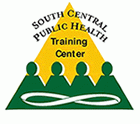
The History of Public Health Informatics: Where Do We Go from Here?
Course Description:
What is public health informatics (PHI)? Simply put, PHI is a sub-field of public health. Program faculty will journey through the evolution of public health informatics and describe how key events over the past decade have contributed to development and utilization of many computerized systems that support public health practice. Special focus will be given to major PHI applications including syndromic surveillance. Emerging (e.g., geographic information systems, text-messaging) and future (e.g., social networking, public health information exchange) PHI applications will also be discussed.
Note: This course was originally delivered as a satellite broadcast.
Target Audience
Academic Faculty/Staff, Federal Government Employees, State Government Employees, Local Government Employees, Non-Government Employees and Students
Learning Objectives
- Discuss how the sub-discipline of public health informatics has evolved over time
- Describe how health information technology (HIT) can be used to enhance public health practice
- List potential ethical, social, and political issues associated with the development of HIT applications for public health purposes
Instructor:

Nir Menachemi, PhD, MPH
Associate Professor
Department of Health Care Organization and Policy
School of Public Health
University of Alabama at Birmingham
Available Credit
- 2.00 Participation/CETulane Professional and Continuing Education (PaCE) awards 2.00 hour(s) of credit for completing The History of Public Health Informatics: Where Do We Go from Here?
Price
Required Hardware/software
System Settings
This course is designed to work most effectively if your computer and internet connection meet certain minimal requirements. This course can be accessed using a Windows 10 PC or a Mac with High Sierra1, Mojave, or Catalina. Pop-up blockers should be disabled when viewing the course. Internet Explorer 11 (for Windows 10), or the current version of Google Chrome, Mozilla Firefox, or Apple Safari (for Windows 10 and or Mac) is required. Many of our courses require Java and JavaScript enabled.
Links to External Websites
Links to websites outside this course will open in a new window or tab. Some browsers may minimize the course window. If this occurs, maximize the course window to return to the course.
Adobe Acrobat Reader (for desktops and laptops)
Adobe Acrobat Reader is required to access some documents in this course. If you need to download a free copy of Acrobat Reader, click here.
Internet Connection Speed
A minimum download speed of 1.5 Mbps is recommended for an optimal experience, which is commonly the speed associated with a basic DSL or a cellular/satellite connection. A faster connection, such as cable or fiber service, with further enhance your online experience. A Wi-Fi connection is generally acceptable, but it is dependent upon one of the two services mentioned above. You can check your internet connection speed at http://www.speedtest.net/.

 Facebook
Facebook X
X LinkedIn
LinkedIn Forward
Forward